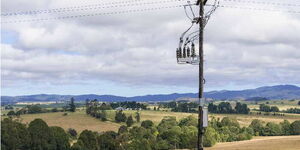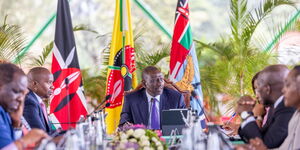Kenya Wildlife Service has invited the public to participate in wildlife farming as the world marked Wildlife Day held on March 3.
KWS outlined different ways the public can commercially exploit wildlife, creating a sustainable means of livelihood.
"Wildlife farming is a viable economic enterprise that encourages the conservation of Kenya's wildlife species as well as their natural habitats," noted KWS in a public information poster.
The Kenya Wildlife Service (KWS) allows the farming of crocodiles, tortoises, chameleons, ostriches, frogs, lizards, guinea fowl, quails, snails and butterflies.
KWS also allows for the farming of aloe, Prunus Africana, East African Sandal Wood, White’s Ginger (Mkombera) and Camphor Basil.
The custodian of Kenya's wildlife explained that it permits the captive breeding and ranching of the listed wild animals and plants for commercial use, wildlife sanctuary and conservancy for ecotourism, recreation and education enterprise.
Other uses include the captive keeping of wild animals for ecotourism and education enterprise, and "wildlife sanctuary and conservancy for ecotourism, recreation and education enterprise."
Captive keeping or breeding for ornamental or personal use is also allowed.
A Kenyan who farms crocodiles spoke to BBC News in 2016 revealed that he had more than 33,000 crocodiles at his 300-acre farm in Kitui. He said that demand for crocodile meat from upmarket tourist hotels and foreign countries had risen. Crocodile meat is also used in making bags, belts and shoes.
“Each crocodile can fetch you Ksh5000 to Ksh7000 Kenyan shillings. Crocodile farming has its challenges but the most surprising result is the profits,” said Mueke.
The main market for chameleons is Europe, Japan and America. They are mainly sold in pairs as pets. Frog farmers can harvest up to six thousand frogs per year depending on the size of the farm. The main market is western countries and upmarket hotels where frogs are enjoyed as a delicacy.
Ostrich, snail, tortoise, quails, guinea fowl and butterfly farming is not new to Kenyans. The farming of the six animals has been done for a while now.
KWS, however, enforces strict measures on people found in possession of wildlife trophies, people found to have killed or injured wild animals and also those found to be involved in poaching. The wildlife Conservation and Management Act carries a life sentence for those involved in the illegal killing of endangered or threatened species.
How to apply for a KWS permit to practice game farming
The first step is to get a game farming permit from KWS. The application is made to the Director KWS through the nearest KWS office. One is then issued with form eleven (Form 11) to fill the required details. Once you have filled the form, inspectors are sent to your farm to inspect and if they are satisfied the form is forwarded to KWS headquarters for approval. Once approved, you are issued with a licence to practise game farming. The licence expires annually and must be renewed.












